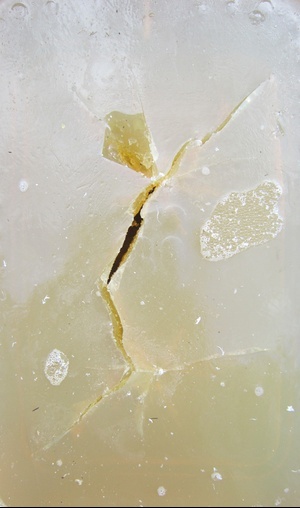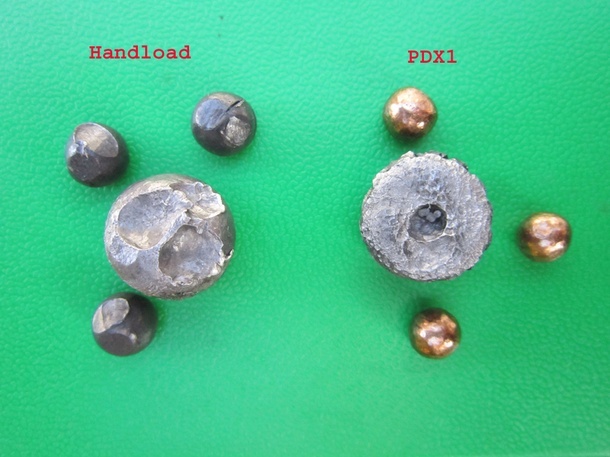Among the new and interesting types 12-guage shotgun ammunition to hit the shelves of gun shops and big box retailers in recent years is the Winchester PDX1 12 Defender. This 2-3/4-inch load sports a buffered payload consisting of a 1-ounce, foster style slug underneath three copper plated size 00 buck pellets and, according to literature printed on the box, is intended to, “provide optimum performance at short and long ranges while compensating for aim error.” Being a fan of all things 12-gauge, I recently obtained a box of PDX1, mixed up a batch of gelatin, and headed to the range for a test session.
At a glance, the Winchester PDX1 load seems as though it could have been modeled after the buck and ball loads sometimes used by infantrymen in the 18th and early 19th centuries. When firing into a column of enemy troops at relatively close range (as was a common combat scenario of that era) a soldier who loaded his smoothbore musket with one large round ball and a small number of buckshot could potentially take more than one enemy out of the fight with a single pull of the trigger.
While such a load made sense for the days when combat consisted of dense columns of troops engaging in volley fire, I am not sure what advantage it offers in a modern home defense situation over a standard buckshot or slug load. Still, the concept is interesting and I had long wanted to fire a round of Winchester PDX1 into some ballistics gel and see what happened.
Needing something to which I could compare the terminal performance of the PDX1 and having a perpetual desire to one-up factory ammo with ammo of my own creation, I also brought along a 12 gauge buck and ball load of my own design. The handload consisted of a three-inch hull stuffed with a 550 grain, .715” diameter round ball topped off with three size 0000 (.380” dia.) buckshot. Total payload weight was approximately 1-7/8 ounces making it a very potent 12 gauge load.

Above: The payloads of the Winchester PDX1 (left) and the author’s own buck ‘n ball handload (right).
Once at the range I conducted both pattern tests and terminal performance tests for both the PDX1 load and my handload. All shots were taken using my Benelli Nova tactical with an 18.5-inch barrel and an improved cylinder choke. The results follow.
Pattern tests
To determine how each load would group their slugs and/or round balls and pattern their buckshot, I fired three rounds of each into targets first at distance of 15 feet and then at 25 yards. At fifteen feet, three PDX1 rounds tore a ragged cloverleaf shaped hole through the bullseye and all buckshot pellets clustered within eight inches of the target’s center.
My handload was similarly accurate at fifteen feet though the round balls printed a slightly larger group and impacted just high of the point of aim. The buckshot from all three rounds stayed within a seven inch circle.

Above: The 15-foot, three round group/pattern yielded by the author’s handload (left) and the Winchester PDX1 (right).
Upon moving the targets to 25 yards, I found that groups and patterns widened noticeably. The slugs from the PDX1 printed a three-inch group just above the bullseye, but only three out of 21 buckshot hit the14x22-inch poster board I was using as a target. Similarly, the round balls from my handloads grouped into a triangular pattern that was four inches long on a side and only three buckshot pellets hit the poster board. It is likely that firing at a target 25 yards distant in a real world situation would leave many large projectiles unaccounted for and that’s never a good thing.

Above: The 25 yard, three round group/pattern yielded by the author’s handload (left) and the Winchester PDX1 (right).
Terminal performance
The pattern tests out of the way, I fired one round each of the PDX1 and my buck and ball handload into my terminal performance test setup at a distance of ten feet. Each payload made short work of the 11-inches of gelatin blocks and imbedded in the ballistic wax backing blocks. The slug from the PDX1 round penetrated 11-inches of gel and an additional 1-1/2 inches of wax while the three 00 buckshot pellets penetrated the entirety of the gel block and an average of 1/3 of an inch of wax. The slug expanded to a maximum diameter of .750 inches. The maximum width of cavity caused by the PDX1 load in the gel was 6-inches.
After firing my handload into the test setup, I was very pleased with myself as the round ball components of the load out-penetrated the PDX1 load by a significant margin. The .718” diameter round ball zipped right through the gelatin and then went on to penetrate 3-1/2-inches of the wax backer. The 0000 buckshot pellets defeated the gel block and penetrated to an average depth of ¼” in the wax backer. The payload created a cavity in the gel that was 5-3/4-inches in diameter at its widest point and the recovered round ball showed little deformation excepting two divots where buckshot pellets were compressed into it during firing. While the performance of the round was impressive, over-penetration could be an issue in some real world situations.

Above: A cross section of the damage the buck and ball loads did to the gelatin. The top “wound” was made by the author’s handload while the bottom “wound” was made by the Winchester PDX1 load.

Above: The recovered projectiles from the handloaded buck ‘n ball load (left) and the Winchester PDX1 (right).
While modern, 12-gauge, buck and ball loads like the Winchester PDX1 are undoubtedly interesting and incredibly powerful, I can’t help but question their practicality. At close ranges (typical of most home defense scenarios) the pattern yielded by such loads offer no improved hit probability over standard buckshot or slug loads – if a shooter can hit a target at 15 feet with a buck and ball load, he or she can probably also hit it with a slug or hail of buckshot. At longer distances, it is likely that even a dead-center hit will still send some buckshot pellets off into the background, which is a potential safety issue. (25)






